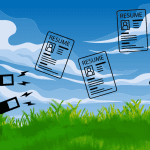
Bringing on a full-time recruiter can be extremely beneficial for your workforce pipeline and your retention efforts.
“The way I look at recruiting is very similar to sales,” says David Koehn, president of Koehn Outdoor, based in Jacksonville, Florida. “You’re building your pipeline; you’re following up. There are a lot of the same processes in sales as it is recruiting.”
Because this is their full-time job, recruiters have the focus and ability to implement additional strategies at their landscape companies. Check out some of their methods below.
Know Your Demographics
“Demographics are not the same throughout the city,” says Laura Castano, director of human resources for Koehn Outdoor. “It’s very important for us as recruiters and an HR department to know what we are targeting our recruiting piece.”
She says they have to consider what type of brand they are presenting to the community. Castano says you need to look for people who are a good fit for the industry. They aren’t just looking for a warm body because they lose money, time, and effort hiring a prospect who is only going to stay at the company for a few days.
Get Creative with Outreach Channels
Stephanie Corrigan, human resources manager for Mountain View Landscapes, Inc., based in Chicopee, Massachusetts, says Lisa Caron, their recruitment coordinator, has created recruiting magnets for their vehicles, hiring business cards for managers to hand out and placed flyers at various businesses.
“In a creative move, she brought donuts to 15 police and fire departments locally with our flyers when we were looking for part-time landscape employees,” Corrigan says.
Koehn Outdoor also has QR codes on cards that their recruiter can hand out. All of their applications are digital, which alleviates candidates having to come to their office.
Castano says they developed a list of all the supermarkets, churches and homeless shelters within a 10-mile radius of their headquarters. She says you need to think outside the box and not just look at Walmarts. Based on their area, they also target Jamaican and Caribbean market stores when recruiting.
Castano has a bus route timesheet as well, so they can send one of their work trucks to pick up employees from the bus stop and bring them to work in the morning.
Dennis Evans, owner of Quiet Village Landscaping, based in St. Louis, Missouri, says their recruiter utilizes an applicant tracking system to build a database for jobs in the future. If they are looking to fill another role, they can review candidates who applied in the past.
Build Relationships
Corrigan notes that Caron has a talent for developing relationships and has found some candidates who were considering a job change but were not quite ready to make the leap.
“She built professional relationships with them over periods of months until they were ready, and those have resulted in us hiring some great people,” Corrigan says.
Recruiters can also have the time to network with your local schools and colleges to identify faculty members who can connect you with students who have an interest in landscaping. Educators say they prefer to push students toward businesses they know and have relationships with.
“I’ll have students who will come to me and say, ‘Hey, Dr. West, I found this company. I’d like to maybe intern with them. What do you know about them?’” says Todd West, Ph.D., professor of horticulture at North Dakota State University, based in Fargo, North Dakota. “I’m like, ‘Nothing. I don’t know. You’re kind of on your own on this one.’ That’s why these relationships are so important.”
Revamp Your Onboarding
Adding a recruiter can also give your HR team the bandwidth to improve your onboarding process.
Evans says their recruiter has focused on developing a very robust onboarding process to let the new employees know that they’re there for them. They have a whole recommending reading list for new hires. Their onboarding process lasts 90 days, consisting of lots of follow-up meetings and training.
“Our recruiter has revolutionized our onboarding process, reducing the average hiring timeline from 11 days to just three,” says Joe Bushey, human resources director for MSNW Group, LLC, based in Ferndale, Washington. “This efficiency streamlines our hiring process and enhances the candidate experience from application to commencement.”
Corrigan says they’ve implemented initiatives she didn’t have time to execute alone. They were able to transfer the entire process from paper to electronic in their HR portal, saving time.
“What I’ve learned is that there’s really no magic wand,” Koehn says. “It’s just a lot of effort and hard work.”




